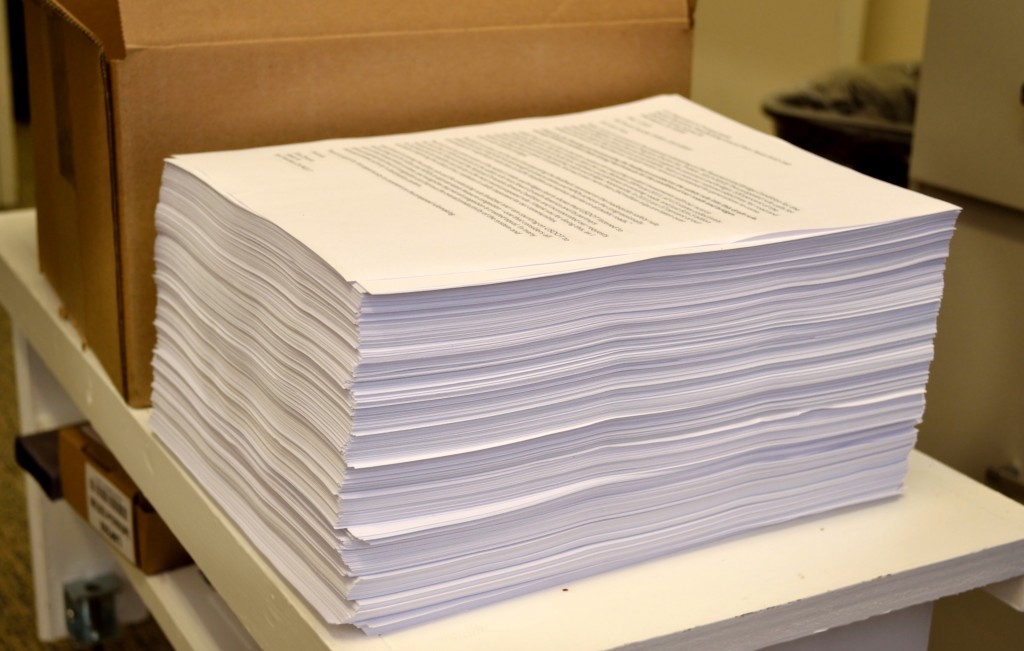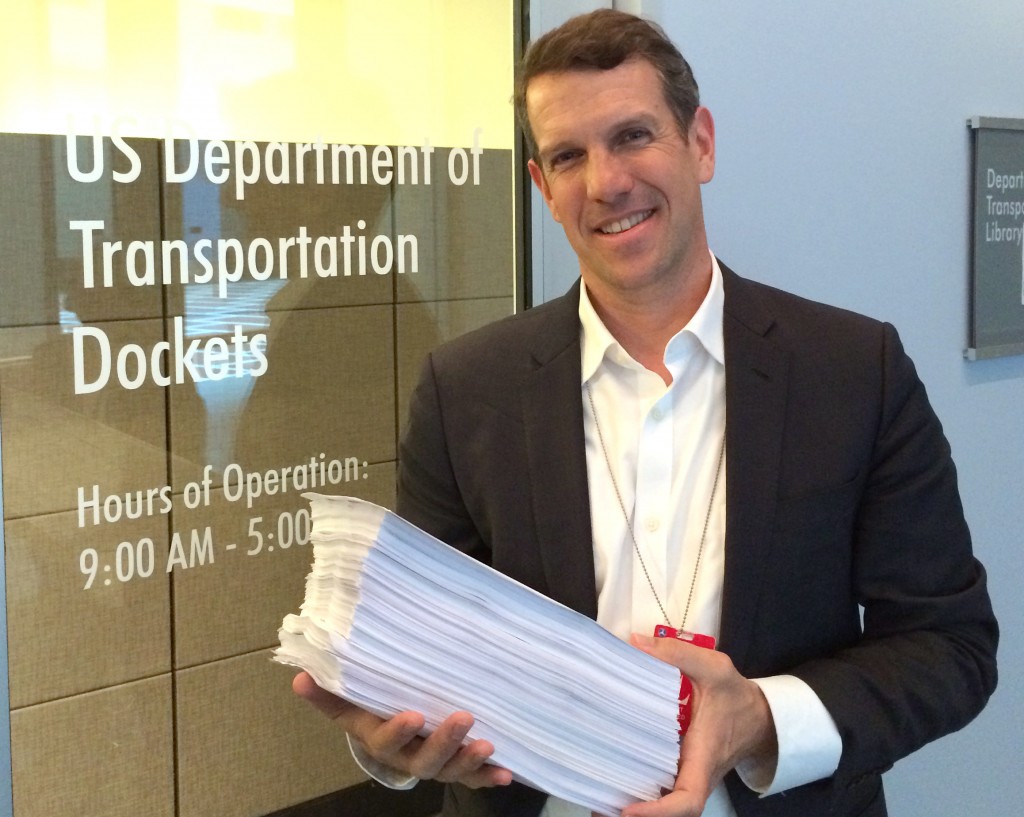
The USDOT listened, and we thanked them for it — 1,100 times

Last Friday, with help from many of you, we delivered almost 1,100 ‘thank you’ letters to the U.S. Department of Transportation for writing strong rules to hold states accountable for the condition of their roads and bridges.
It was an astonishing thing to see the enormous stack of letters piled up on a desk in our office. Last Thursday, just before the Friday deadline for comments, T4America director James Corless got a midday workout by hauling the box of letters across town to USDOT and ensuring that your voices were heard on the issue.

USDOT is working to establish a new system of performance measures to govern how federal dollars are spent via this process of draft rules and feedback.
Last year, after complaining that the USDOT’s proposed safety performance measures — the first set of measures — were far too lenient, we sent the agency 1,500 letters letting them know that the rule was not good enough. The USDOT listened and drafted much stronger rules for their second set of measures on road and bridge conditions. In the first draft, states were allowed to fail half of their targets and still receive a passing grade. But after receiving those 1,500 comments, USDOT incorporated that feedback into this improved draft rule for road and bridge conditions, requiring progress on all targets — not just 50 percent of them.
So it was time to say thank you and let USDOT know that requiring progress across the board is just as essential for evaluating the condition of our roads and bridges.
Even third graders know that our voices matter. T4A director James Corless had to stop by his son’s classroom on his way to USDOT, and he had the giant box of letters in tow.
I had been scheduled to talk to my third grade son’s civics class about how Congress and the Administration make decisions about things like the federal budget and how much we spend on transportation. After talking a lot about the different roles of Congress and the President, one of the third graders put up her hand.
“What’s in the box?” she said.
“Those are letters to Secretary Foxx, head of the U.S. Department of Transportation,” I replied.
“Is that a petition?” another child asked.
“In a way, yes, except this time we are thanking them for listening to the public — that’s the great thing about a democracy.”
“Cool!” another third grader said. “They’re going to have to read all of those letters, right? Can we send some too?”
Coming up next? Measuring congestion
You (and those third graders) will have an opportunity to engage once again on this issue. Sometime this year USDOT will release their third draft rule that will include an approach for measuring congestion. Congestion is a tricky thing to measure, and most of our current analyses wildly miss the mark. As our Beth Osborne wrote back in January:
For example, is the goal of highway performance to keep traffic moving at the speed limit no matter how many cars are on it? Or is it to know that your trip today will take the amount of time you budgeted for it? If it is the former, we will have to spend a lot of money paving over a lot of places at marginal benefit to ensure a safe and efficient commute or delivery. If it is the latter, we can address the issue with a mix of more affordable operational improvements, emergency response and new capacity. In congestion, are we only interested in the speed of cars or do we give communities credit for letting their residents opt out of congestion entirely by taking transit, walking or biking?
As another example, while you might want an interstate between two cities to flow as freely as possible, some congestion on a city street in a business district might be desired as a sign that it’s a popular destination. Yet most current measures often treat these roadways the same.
We will be exploring some ideas about better ways to measure congestion here in the next few weeks, hopefully before USDOT releases their next rule, so stay tuned.



